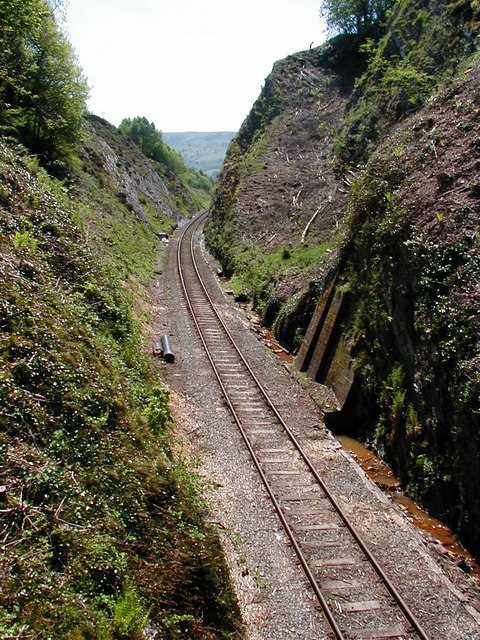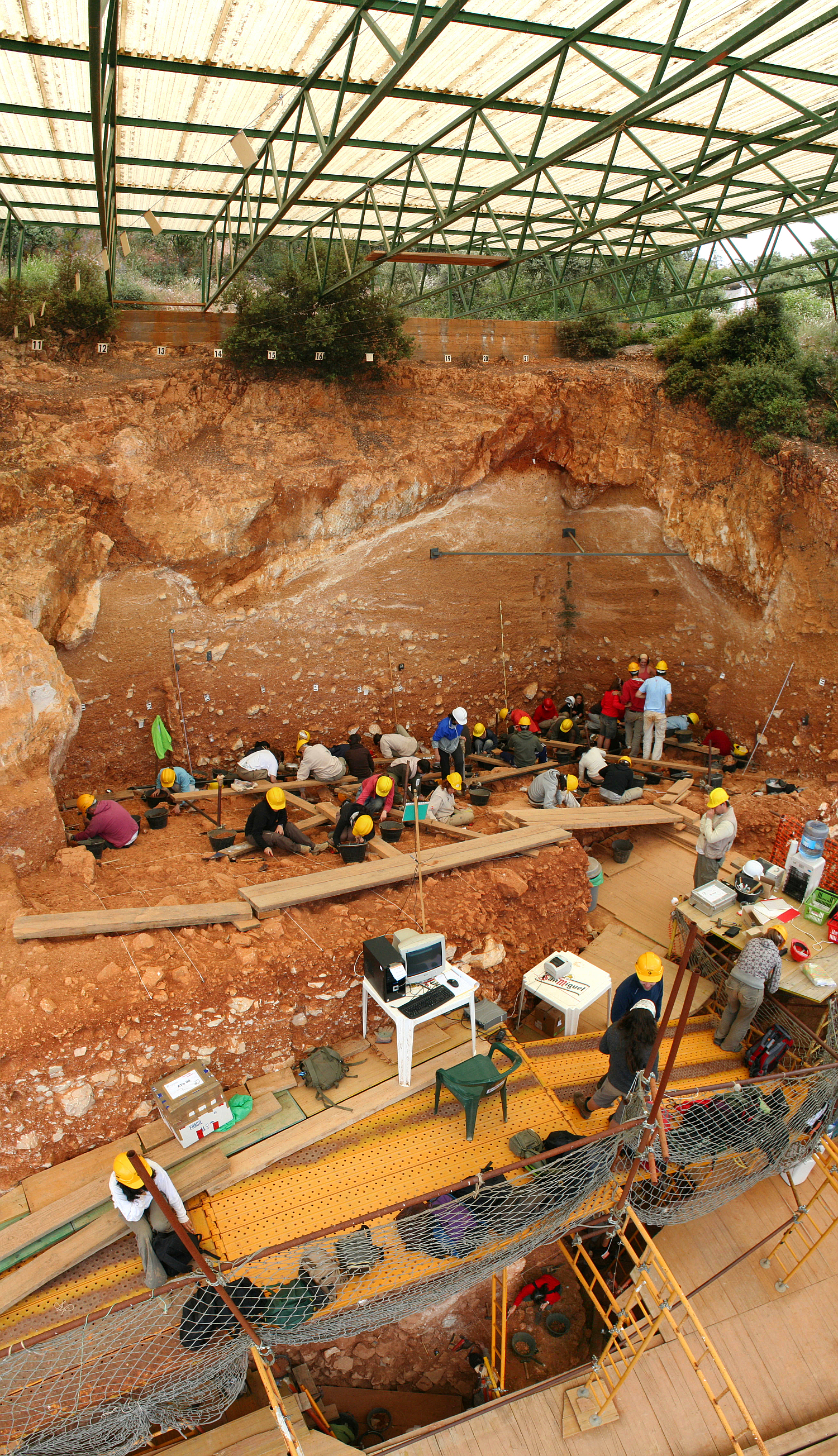|
Cut (archaeology)
In archaeology and stratification (archaeology), archaeological stratification, a cut or truncation is a Archaeological context, context that represents a moment in time when other archaeological deposits were removed for the creation of some Feature (archaeology), feature, such as a ditch or pit. In layman's terms, a cut can be thought of as a hole that was dug in the past, though cut also applies to other parts of the archaeological record such as horizontal truncations like terraced ground. A cut context is sometimes referred to as a "negative context", as opposed to a "positive context". The term denotes that a cut has removed material from the archaeological record or archaeological natural, natural at the time of its creation, as opposed to a positive context, which adds material to the archaeological record. A cut has zero thickness and no material properties of its own and is defined by the limits of other contexts. Cuts are seen in the record by virtue of the difference be ... [...More Info...] [...Related Items...] OR: [Wikipedia] [Google] [Baidu] [Amazon] |
Single Context Recording
Single context recording was initially developed by Ed Harris and Patrick Ottaway in 1976, from a suggestion by Laurence Keen. It was further developed by the Department of Urban Archaeology (Museum of London) from where it was then exported, in the mid-1980s by Pete Clarke to the Scottish Urban Archaeological Trust and Nick Pearson to the York Archaeological Trust. It has become a popular system of recording and planning being used in many countries in Europe and in Lebanon, it is especially suited to the complexities of deep, typically urban, archaeology. Each excavated context is given a unique "context number" and is recorded by type on a context sheet and perhaps being drawn on a plan and/or a section. Depending on time constraints and importance contexts may also be photographed, but in this case a grouping of contexts and their associations are the purpose of the photography. Finds from each context are bagged and labelled with their context number and site code for l ... [...More Info...] [...Related Items...] OR: [Wikipedia] [Google] [Baidu] [Amazon] |
Relationship (archaeology)
An archaeological relationship is the position in space and by implication, in time, of an object or context with respect to another. This is determined, not by linear measurement but by determining the sequence of their deposition – which arrived before the other. The key to this is stratigraphy. Stratigraphic relationships Archaeological material would, to a very large extent, have been called rubbish when it was left on the site. It tends to accumulate in events. ''A gardener swept a pile of soil into a corner, laid a gravel path or planted a bush in a hole. A builder built a wall and back-filled the trench. Years later, someone built a pig sty onto it and drained the pig sty into the nettle patch. Later still, the original wall blew over and so on.'' Each event, which may have taken a short or long time to accomplish, leaves a context, a deposit of material, on the site. This deposit and its relationship to earlier contexts may show up in section or in plan when viewed fro ... [...More Info...] [...Related Items...] OR: [Wikipedia] [Google] [Baidu] [Amazon] |
Harris Matrix
The Harris matrix is a tool used to depict the temporal succession of archaeological contexts and thus the sequence of depositions and surfaces on a 'dry land' archaeological site, otherwise called a 'stratigraphic sequence'. The matrix reflects the relative position and stratigraphy, stratigraphic contacts of observable stratigraphic units, or contexts. It was developed in 1973 in Winchester, England, by Edward C. Harris.The concept of creating Seriation (archaeology), seriation diagrams of archaeological strata based on the physical relationship between strata had had some currency in Winchester and other urban centres in England prior to Harris's formalisation. One of the results of Harris's work, however, was the realisation that sites had to be excavated stratigraphically, in the reverse order to that in which they were created, without the use of arbitrary measures of stratification such as spit (archaeology), spits or . In his ''Principles of archaeological stratigraphy'' Ha ... [...More Info...] [...Related Items...] OR: [Wikipedia] [Google] [Baidu] [Amazon] |
Cut (earthmoving)
In civil engineering, a cut or cutting is where soil or rock from a relative rise is removed. Cuts are typically used in road, rail, and canal construction to reduce a route's length and grade. Cut and fill construction uses the spoils from cuts to fill in defiles to create straight routes at steady grades cost-effectively. Cuts are used as alternatives to indirect routes, embankments, or viaducts. They also have the advantage of comparatively lower noise pollution than elevated or at-grade solutions. In river management, the term cut or cutting is also used, which refers to the action of short-cutting a meander, in order to speed a waterway's flow. History The term ''cutting'' appears in the 19th century literature to designate rock cuts developed to moderate grades of railway lines. ''Railway Age's Comprehensive Railroad Dictionary'' defines a cut as "a passage cut for the roadway through an obstacle of rock or dirt." Creation Cuts can be created by multiple pa ... [...More Info...] [...Related Items...] OR: [Wikipedia] [Google] [Baidu] [Amazon] |
Archaeological Plan
In archaeological excavation, a plan is a drawn record of features and artifacts in the horizontal plane. Overview An archaeological plan can either take the form of * A "multi context" plan, which is drawn with many contexts on it to show relationships between these features as part of some phase, or * Alternatively, a single context plan with a single feature is drawn. Excavated features are drawn in three dimensions using drawing conventions such as hachures. Single context planning, developed by the Museum of London, has become the professional norm. The basic advantage of single context planning is that context plans are drawn on "transparent perma-trace paper" and can be overlaid for later re-interpretation. Instead of single-context plans, m''ulti-context plans'' can comprise complete sites, trenches or individual features. In the United Kingdom, the scale of the plans is usually 1:20. They are linked to the site recording system by including known grid points ... [...More Info...] [...Related Items...] OR: [Wikipedia] [Google] [Baidu] [Amazon] |
Archaeological Association
This page is a glossary of archaeology, the study of the human past from material remains. A B C D E F G H I J K L M N O P Q R S T U V W X Y Z See also * Outline of archaeology * Table of years in archaeology * Glossary of history References Bibliography * * * * * * * * * External links About.com Archaeology Glossary {{Glossaries of science and engineering Archaeology Archaeology or archeology is the study of human activity through the recovery and analysis of material culture. The ... [...More Info...] [...Related Items...] OR: [Wikipedia] [Google] [Baidu] [Amazon] |
Archaeological Section
In archaeology a section is a view in part of the archaeological sequence showing it in the vertical plane, as a cross section, and thereby illustrating its profile and stratigraphy. This may make it easier to view and interpret as it developed over time. Sections Half-sectioning is the usual method whereby one half of a feature is excavated and the remainder left in situ. Large linear features may be sectioned at intervals along their lengths. Sectioning has fallen out of favour in some schools of practice because detail is often missed in section that is important to the phasing of the site. Examples of detail that is revealed poorly "in section" include gravel or thin cobbled surfaces. The main problem with sections is that the arbitrary location of their placement may "clip" or "just miss" contexts that reveal a different story from the one interpreted by the archaeologist. For instance thin liner features such as wheel ruts may be sectioned at an oblique angle giving the ... [...More Info...] [...Related Items...] OR: [Wikipedia] [Google] [Baidu] [Amazon] |
Sequence (archaeological)
In archaeology, seriation is a Relative dating#Archaeology, relative dating method in which assemblage (archaeology), assemblages or artifact (archaeology), artifacts from numerous sites in the same culture are placed in chronological order. Where absolute dating methods, such as radio carbon, cannot be applied, archaeologists have to use relative dating methods to date archaeological finds and features. Seriation is a standard method of dating in archaeology. It can be used to date stone tools, pottery fragments, and other artifacts. In Europe, it has been used frequently to reconstruct the chronological sequence of graves in a cemetery (e.g. Jørgensen 1992; Müssemeier, Nieveler et al. 2003). Contextual and frequency seriation Two different variants of seriation have been applied: contextual seriation and frequency seriation (Renfrew and Bahn 1996, pp. 116–117). Whereas contextual seriation is based on the presence or absence of a Style (visual arts)#Style in arch ... [...More Info...] [...Related Items...] OR: [Wikipedia] [Google] [Baidu] [Amazon] |
Archaeology
Archaeology or archeology is the study of human activity through the recovery and analysis of material culture. The archaeological record consists of Artifact (archaeology), artifacts, architecture, biofact (archaeology), biofacts or ecofacts, archaeological site, sites, and cultural landscapes. Archaeology can be considered both a social science and a branch of the humanities. It is usually considered an independent academic discipline, but may also be classified as part of anthropology (in North America – the four-field approach), history or geography. The discipline involves Survey (archaeology), surveying, Archaeological excavation, excavation, and eventually Post excavation, analysis of data collected, to learn more about the past. In broad scope, archaeology relies on cross-disciplinary research. Archaeologists study human prehistory and history, from the development of the first stone tools at Lomekwi in East Africa 3.3 million years ago up until recent decades. A ... [...More Info...] [...Related Items...] OR: [Wikipedia] [Google] [Baidu] [Amazon] |



